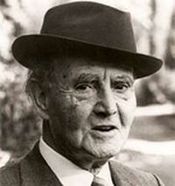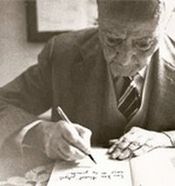The poet Foix de Sarrià and the name of the library
22/05/202429/05/2024
 Although it is expected to be inaugurated at the end of the year, the name of the Sarrià library is still a mystery, while that of J. V. Foix, the author of Sarrià par excellence, encounters the partisan dispute of the old town.
Although it is expected to be inaugurated at the end of the year, the name of the Sarrià library is still a mystery, while that of J. V. Foix, the author of Sarrià par excellence, encounters the partisan dispute of the old town.
The writer and journalist Joan Safont Plumed has published an excellent article on this issue at Vilaweb.
You can read it here.
Sant Jordi at the Poeta Foix school
08/05/202408/05/2024
 Once again, at the Poeta Foix school they have celebrated Sant Jordi’s day. Committed to Catalan literature and identity, they have organized the Floral Games as every year.
Once again, at the Poeta Foix school they have celebrated Sant Jordi’s day. Committed to Catalan literature and identity, they have organized the Floral Games as every year.
The Book Club families have presented the Floral Games prizes to the winners in recognition of their literary creativity and talent. This day has also been an opportunity to reflect on the identity of the school by working on the figure of the poet who gives it its name: J. V. Foix.
J. V. Foix at the 92nd anniversary of the FNEC
02/05/202402/05/2024
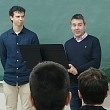 On April 22, an event was held at the University of Barcelona to commemorate the 92nd anniversary of the National Federation of Students of Catalonia. As a tribute to the Catalan language and culture, current and historical militants of the Federation read texts by leading authors of Catalan literature, among which J. V. Foix, who had a leading role. The rector of the UB, Joan Guàrdia, welcomed the audience.
On April 22, an event was held at the University of Barcelona to commemorate the 92nd anniversary of the National Federation of Students of Catalonia. As a tribute to the Catalan language and culture, current and historical militants of the Federation read texts by leading authors of Catalan literature, among which J. V. Foix, who had a leading role. The rector of the UB, Joan Guàrdia, welcomed the audience.
Here you can see the photographs.
J. V. Foix in the ranking of Tornaveu Poètic
24/04/202424/04/2024
 For Sant Jordi, Tornaveu Poètic, created by Enric Umbert-Rexach, and which aims to present poems read by the poets themselves or by rhapsodes, accompanied by a video, has published the list of the five most visited video readings, among which has J. V. Foix. The other four are, in alphabetical order, Maria Josep Escrivà, Gemma Gorga, Josefina Maymó and Adrià Targam.
For Sant Jordi, Tornaveu Poètic, created by Enric Umbert-Rexach, and which aims to present poems read by the poets themselves or by rhapsodes, accompanied by a video, has published the list of the five most visited video readings, among which has J. V. Foix. The other four are, in alphabetical order, Maria Josep Escrivà, Gemma Gorga, Josefina Maymó and Adrià Targam.
Here you can see and listen to the most listened to poems.
J. V. Foix in the Frontissa magazine
10/04/202410/04/2024
 In March the magazine Frontissa, a digital publication of the Coordinadora del Centre d’Estudis de Parla Catalana, founded in 1992 to coordinate and promote activities and interests of study centers and institutes that aim to study, disseminate and defend the cultural and natural heritage in the area of Catalan-speaking territories.
In March the magazine Frontissa, a digital publication of the Coordinadora del Centre d’Estudis de Parla Catalana, founded in 1992 to coordinate and promote activities and interests of study centers and institutes that aim to study, disseminate and defend the cultural and natural heritage in the area of Catalan-speaking territories.
In this issue, it dedicates a space to the prose poem “Quan vaig saber que el meu oncle…” from From the «Diari 1918» (1956).
World Poetry Day 2024
21/03/202421/03/2024
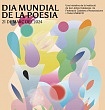 In 1999, the General Conference of UNESCO proclaimed March 21 as World Poetry Day (WPD). The Institució de les Lletres Catalanes and the Catalan Federation of Unesco Associations and Clubs are promoting this celebration with the choice of a poet and his poem for the occasion. In the seventeenth edition of the DMP, the ILC has chosen the poem “m’he estimat molt la vida” by Vicent Andrés Estellés, whose birth centenary we commemorate this year.
In 1999, the General Conference of UNESCO proclaimed March 21 as World Poetry Day (WPD). The Institució de les Lletres Catalanes and the Catalan Federation of Unesco Associations and Clubs are promoting this celebration with the choice of a poet and his poem for the occasion. In the seventeenth edition of the DMP, the ILC has chosen the poem “m’he estimat molt la vida” by Vicent Andrés Estellés, whose birth centenary we commemorate this year.
This year the Foundation has chosen a poetic prose by J. V. Foix of Gertrudis, his first book. Here you can read it.
Perejaume invites us to read J. V. Foix
13/03/202420/03/2024
 Within the project «Today’s writers invite us to read yesterday’s writers» started in 2021 by Espais Escrits, now we have the opportunity to know what the artist and writer Perejaume says about the poetJ. V. Foix: when he met him, what he admires most about him and what are the most important place names in his work. Likewise, we will hear him read the poem “L’espiamonges.” The video can be seen here.
Within the project «Today’s writers invite us to read yesterday’s writers» started in 2021 by Espais Escrits, now we have the opportunity to know what the artist and writer Perejaume says about the poetJ. V. Foix: when he met him, what he admires most about him and what are the most important place names in his work. Likewise, we will hear him read the poem “L’espiamonges.” The video can be seen here.
Here you can see the video.
J. V. Foix by Quim Domene in the Vic Leather Art Museum
28/02/202428/02/2024
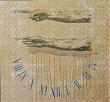 The Olot artist Quim Domene presents the exhibition Narratives del desconcert at the Museu d’Art de la Pell of Vic. J. V. Foix is represented there with the work Dibuixàvem rellotges de sol…, from the book Desa aquests llibres al calaix de baix.
The Olot artist Quim Domene presents the exhibition Narratives del desconcert at the Museu d’Art de la Pell of Vic. J. V. Foix is represented there with the work Dibuixàvem rellotges de sol…, from the book Desa aquests llibres al calaix de baix.
Days: from February 17 to April 7, 2024
Place: Leather Art Museum. Arquebisbe Alemany, 5. Vic
Here you can read the Dibuixàvem rellotges de sol… poem.
Gertrudis and KRTU into Spanish
14/02/202413/12/2024
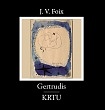 The bilingual Catalan-Spanish edition of Gertrudis and KRTU, the first two books by J. V. Foix, with translation by Antonio Jiménez Millán and editing and presentation by Enric Bou has just been published.
The bilingual Catalan-Spanish edition of Gertrudis and KRTU, the first two books by J. V. Foix, with translation by Antonio Jiménez Millán and editing and presentation by Enric Bou has just been published.
These two books of poetic prose are fundamental to the Iberian and European avant-garde and illustrate an aspect of the author’s characteristic duplicity.
Sol, i de dol as a process of post-symbolist knowledge
31/01/202431/01/2024
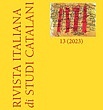 Jordi Marrugat proposes that Sol, i de dol is a process of knowledge of individual, historical and metaphysical reality and for this Foix carries out a review of modern Catalan culture and society between 1913 and 1923.
Jordi Marrugat proposes that Sol, i de dol is a process of knowledge of individual, historical and metaphysical reality and for this Foix carries out a review of modern Catalan culture and society between 1913 and 1923.
Likewise, it is an initiatory journey in which J. V. Foix constructs his own poetic position within post-symbolism. This structure is inextricably linked to the symbolic use of numbers and dates, as well as their main intertexts.
